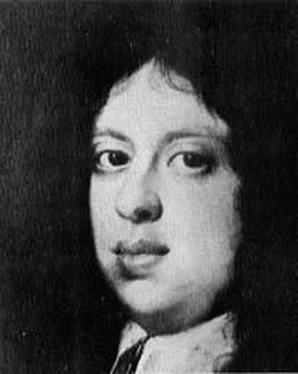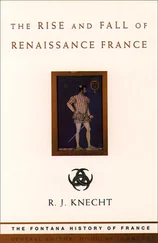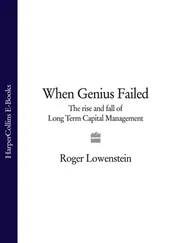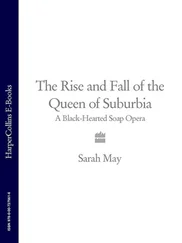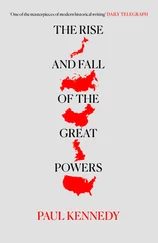This forceful recruit to the Party of the Hill was Niccolò Soderini, an expert orator and a member of one of the oldest and proudest families in Florence. Soderini vehemently attacked the device of the Accoppiatori , by which the Medici had so conveniently packed the Signoria with their friends and adherents, and advocated a return to the election by lot as practised in the earlier days of the Republic. His idealism and rhetoric triumphed. The Accoppiatori were abolished, and, amongst the names of the Priori elected to the Signoria in November 1465 was that of Niccolò Soderini who was immediately elected Gonfaloniere . He was accompanied to the Palazzo della Signoria by a crowd of admirers who placed a wreath of olive leaves around his head.
After this triumphant inauguration, Soderini’s term of office was a humiliating anti-climax. The reforms which he had promised and now eagerly proposed were regarded with distaste by the Collegi , who discussed them unenthusiastically and set them aside. At the beginning of January 1466, their short time of office over, he and the other Priori dejectedly left the Palazzo della Signoria on which was posted a placard with the words, ‘Nine Fools are out’. Soderini returned to his own palazzo convinced – as Pitti, Acciaiuoli and Neroni were all now convinced – that the only chance of success against the Medici lay in armed rebellion.
For several weeks nothing was done; and then, on 8 March, the Medici’s great ally, Francesco Sforza, died in Milan, leaving several sons, the eldest of whom, Galeazzo Maria, was an unstable young man of strange tastes and weird behaviour. Piero, nevertheless, argued that the continuance of the Milanese alliance was essential to Florence’s future prosperity. The Party of the Hill, on the other hand, insisted that the city should now return to its old friendship with Venice. Out of this dispute the attempted coup was born.
Pitti, Soderini and their friends secretly approached the Venetians for help in ridding Florence of the Medici. They also made overtures to Borso d’Este, the genial and ostentatious Duke of Ferrara who had recently erected a large statue of himself in the city’s main square. Duke Borso agreed to help them by sending troops across the frontier under command of his brother Ercole. These troops were to advance on Florence, while other forces were to seize Piero, together with his two sons, and to have them all hastily executed on some convenient charge. A good opportunity to carry out this plan presented itself in August when Piero fell ill and was carried in a litter out of Florence to the villa of Careggi.
Scarcely had he arrived at Careggi than a messenger came to the villa with an urgent warning from his friend Giovanni Bentivoglio of Bologna of the approaching danger. Piero immediately ordered his servants to lift him out of bed and to carry him back to Florence, sending Lorenzo on ahead to prepare for his arrival. Galloping back to the city, Lorenzo came upon some of the armed conspirators loitering on the road near the villa of Diotisalvi Neroni’s brother, the Archbishop. Not recognizing him, they let him pass by; but as soon as he was out of sight he sent word back to his father, warning him to make for Florence by a different and little-used road.
The sudden and unexpected return of the Medici to Florence on the afternoon of 27 August so alarmed the leading conspirators that they immediately lost their nerve. Luca Pitti hurried down to the Medici Palace to beg Piero’s forgiveness, and to swear that he would ‘live or die’ with him; the others mustered their armed supporters, but could not decide what orders to give them. Piero, by contrast, appeared wholly in control of the situation and of himself. He summoned his men to arms, sent messages for help to Milan and made arrangements for the accession to power of a firmly pro-Medici Signoria at the next elections due to be held on 2 September.
This Signoria , chosen in compliance with Medicean prompting, called for a Parlamento . A few hundred well-disposed citizens entered the Piazza which was lined with three thousand troops, amongst whom Lorenzo de’ Medici rode up and down on his horse. The Parlamento obediently agreed to a Balìa; and the troubles were suddenly over. The republican reaction was defeated, and the power of the Medici confirmed.
Soderini, Neroni and Acciaiuoli were all banished from Florence. In recognition of his tardy submission Luca Pitti, old and humiliated, was pardoned in the expectation that this erstwhile friend of Cosimo would be reclaimed as an ally, an expectation realized when Luca’s daughter was married to Giovanni Tornabuoni, a close relative of Piero’s wife. Yet, in exile in Venice, Luca Pitti’s two fellow conspirators, Neroni and Soderini, continued to plot against the Medici. They succeeded in persuading the Doge and the Council that feeling against the family was running high in Florence and that, were a Venetian army to attack the city, the enemies of the family within the walls would rise up in arms to support it. Accordingly, in May 1467, Bartolommeo Colleoni, the famous condottiere who, after twice deserting them for the Milanese, had been appointed by the Venetians captain-general of the Serene Republic for life, was paid to march towards the Tuscan frontier. Once again Piero reacted quickly. Summoning help from both Milan and Naples, he mustered a Florentine army to oppose Colleoni’s advance. The Florentine mercenaries came upon the Venetian army in the territory of the tiny state of Imola, and there they decisively defeated it. Piero’s control over the government of Florence was thus firmly secured.
While defending his family from their rivals within the city walls and the city itself from her enemies outside them, Piero continued the family tradition of munificence. He paid for a splendid tabernacle for the miraculous crucifix in the church of San Miniato al Monte, 2and commissioned an even more magnificent tabernacle for the church of Santissima Annunziata which bore on its base the vainglorious inscription: ‘ Costò fior. 4 mila el marmo solo The marble alone cost 4,000 florins’. 3At the same time he added numerous ancient coins to the collection assembled by his father, bought great numbers of rare manuscript books for the Medici Library, and had many volumes copied out for him and brilliantly illuminated. Antonio Averlino Filarete was told that Piero spent hours looking at these books, turning over the pages ‘as if they were a pile of gold’:
One day he may simply want for his pleasure to let his eye pass along these volumes to while away the time and give recreation to the eye. The next day, then, so I am told, he will take out some of the effigies and images of all the Emperors and Worthies of the past, some made of gold, some of silver, some of bronze, of precious stones or of marble and other materials which are wonderful to behold… The next day he would look at his jewels and precious stones of which he had a marvellous quantity of great value, some engraved, others not. He takes great pleasure and delight in looking at these and in discussing their various excellencies. The next day, perhaps, he will inspect his vases of gold and silver and other precious material and praise their noble worth and the skill of the masters who wrought them. All in all when it is a matter of acquiring worthy or strange objects he does not look at the price.
Like his father, Piero was anxious to be considered the friend as well as the patron of artists. And just as Cosimo, so Antonio Benavieni wrote, ‘bestowed both honours and countless rewards’ on Donatello during his active life, so Piero continued to honour and reward the sculptor in his old age and at his death. It had been one of Donatello’s last requests that he should be buried near Cosimo in the church of San Lorenzo. Piero ensured that this request was fulfilled and undertook to bear the cost of his interment in the crypt next to Cosimo’s tomb. When the coffin was carried there, it was followed by the Medici and thousands of the mourning citizens of Florence.
Читать дальше
